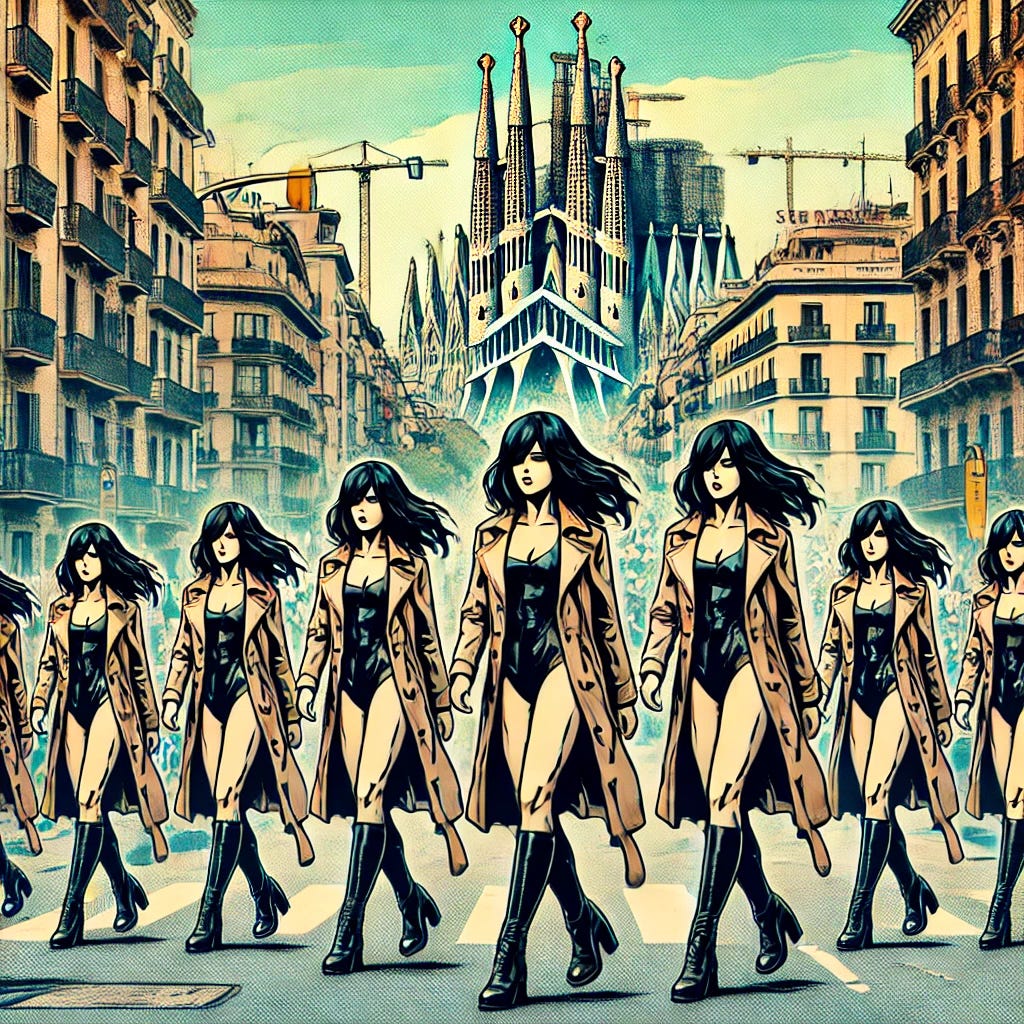The plot of my graphic novel has recently introduced the idea of uploading a person’s consciousness so it can be used elsewhere, like inside a robot or fancy toaster. This idea is also explored in the Amazon comedy Upload. Perhaps you’ve been thinking that this idea is pure SciFi and ignores the limitations of tech.

But SURPRISE, this idea is already well under construction. Our old friend Sam Altman has paid a $10k deposit to a company called Nectome that has figured out a way to embalm a brain better than ever before. It’s embalm-a-leavable! (sorry). Here is Nectome’s mission statement: “Nectome is a research company dedicated to advancing the science of memory. We design and conduct experiments to discover how the brain physically creates memories. And, we develop biological preservation techniques to better preserve the physical traces of memory.”
Here’s the rub. If you want to preserve your beautiful, big brain you have to be alive when they embalm it. Nectome’s CEO Robert McIntyre promises “The procedure is 100% fatal.” This reminds me of the meeting my family and I had with the funeral home director after my father passed away. We wanted Dad cremated, and the funeral home made us sign papers saying we understood the process was “non-reversible.”
Here is another surprise: the article about this company and its brain-balming is from 2018! Can you imagine the progress that has already been made with the rise of AI?
McGill University neuroscientist Michael Hendricks decried the new science as “abjectly false hope.”
Burdening future generations with our brain banks is just comically arrogant. Aren’t we leaving them with enough problems? I hope future people are appalled that in the 21st century, the richest and most comfortable people in history spent their money and resources trying to live forever on the backs of their descendants. I mean, it’s a joke, right? They are cartoon bad guys.
Another naysayer is neuroscientist Moheb Costandi, who writes about the importance of the mind/body connection and why uploading your consciousness will never work.
Being conscious does not just mean being aware of the outside world. It also means being aware of oneself and one’s relationship to one’s surroundings. The way we perceive our bodies plays a central role in self-awareness. The body also exerts subtle but significant influences on how we think and what we feel.
Seeing things is important to feeling things, which is why, say, people sometimes feel missing limbs. But did you know the OPPOSITE can happen? Occasionally people are born with a with a rare condition known as “body integrity dysphoria.” From an early age, they experience the feeling that they should have been born without a specific limb, which later evolves into an intense longing to have it removed. This sounds like the beginning of a horror film, but research now suggests that this condition has a neurological basis that may occur because the unwanted limb was not integrated into the brain's “body map” during early childhood development.

The idea of storing our brains in the cloud is pretty overwhelming, but there is also good news about what AI might allow our brains to do.
Ray Kurzweil, scientist and engineer, wrote a seminal book in 2005 called The Singularity is Near in which he argues that we will ultimately merge with machines, become hyperintelligent, and stick around indefinitely. Here is a quote from his recent interview with Wired.
To me [singularity] is when a human will not only be able to do everything that other people can do, but also create something new, like curing certain forms of cancer. AI is integral to doing that, because you can actually try out every single possible combination of things that might cure cancer. And instead of asking which one of those billions of possible cures are we going to try, we can try them all, and we can simulate them in a few days. The singularity is when we can actually combine that kind of thinking with our normal thinking, and we will then become superhuman.
He is very optimistic and excited about these possibilities, which I find comforting. He predicts a merging of our brains with AI, and I don’t think he just means metaphorically.
People will still look like humans, with normal human skin. But they will be a combination of the brains we're born with, as well as the brains that computers have, and they will be much smarter. When they do something, we will consider them human. We'll all have superhumans within our brains.
That sounds incredible, especially when the only thing I’ve been wishing for is a tiny chip in my brain to remind me where I left my glasses.
Nailed It!
AI image creation is getting better and better, and there are fewer insane mistakes for me to share with you. But good news! AI is still sexist as hell!
This prompt was “a 50 year old woman with long wavy red hair and glasses. She is standing in an apartment in Barcelona. In the background is a mosquito sized robot with wings.”
Please note I did not say, “She has unbuttoned her blouse sexily to stimulate a five foot bee.”
Next, I needed an image of an army of robots. I asked for “ten identical female humanoid robots walking along a street in Barcelona.” “Female humanoid robot” is obviously code for “Veronica from the Archie comics as sex robot.”
Let this be your weekly reminder to get out there and start using AI folks! It’s up to you to make it more representational.






